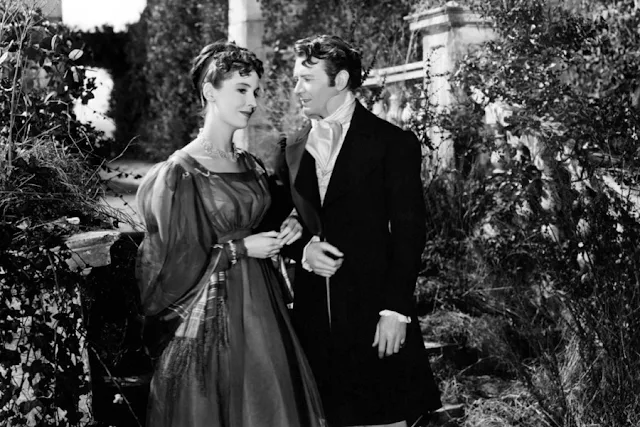 |
| Valerie Hobson and Stewart Granger in Blanche Fury |
Cast: Valerie Hobson, Stewart Granger, Michael Gough, Walter Fitzgerald, Maurice Denham, Sybille Bender, Allan Jeaves, Edward Lexy, Susanne Gibbs, Ernest Jay, Townsend Whitling, J.H. Roberts. Screenplay: Audrey Erskine-Lindop, Cecil McGivern, Hugh Mills, based on a novel by Joseph Shearing. Cinematography: Guy Green, Geoffrey Unsworth. Production design: John Bryan. Film editing: Jack Harris. Music: Clifton Parker.
Timidity is fatal in moviemaking, and Blanche Fury, whose very title promises turbulent emotions, is a timid movie. It failed at the box office, and its producer, Anthony Havelock-Allan, acknowledged that it didn't turn out the way he wanted, leading to his departure from the producing company, Cineguild, and its eventual collapse. It’s a story, involving as it does an ancient curse, that demands high passion and exquisite villainy, but it gets neither. The key failure is in the protagonists, Blanche Fury (Valerie Hobson) and Philip Thorn (Stewart Granger). They should be modeled on the Macbeths, the very byword for glamorous wickedness. She is an impoverished gentlewoman, née Blanche Fuller, from the wrong side of the family. He is the manager of the country estate of the Fury family, their own kin but from the wrong side of the blanket. Thorn has been scheming to be declared the legitimate heir to the estate, hiring a lawyer to track down any evidence that his father, Adam Fury, actually married his mother. Blanche comes to the estate to serve as governess to the daughter of Laurence Fury (Michael Gough), current heir to the estate and a widower. So you guessed it: Blanche is going to marry the insipid Laurence and fall in love with the virile Thorn, and the two will scheme to get their own hands on the estate. Except that in the portrayal of their schemes, the film goes out of its way to make Blanche and Thorn look better than they are, to justify their wicked ways. Blanche is shown struggling to put up with the harshness of her previous employer, an imperious dowager, and Thorn likewise suffers the abuse and indignity of becoming essentially a servant to a household he believes he should head. Blanche and Thorn should flame, or at least smolder, with passion, but Hobson and Granger strike only the feeblest of sparks, partly because the screenplay doesn't give them enough opportunity to ignite. Much of the film seems to be derived from better costume dramas; there is, for example, a death that comes straight out of Gone With the Wind (Victor Fleming, 1939). There's also a lot of nonsense about marauding gypsies: The film's Roma are the stereotypical fortune tellers, trinket peddlers, and horse thieves. It has to be said that the movie is quite handsomely filmed in Technicolor by two eminent cinematographers, Guy Green, who did the interior scenes, and Geoffrey Unsworth, who shot the lovely exteriors in Staffordshire and Bedfordshire. If the story and the characters had the depth and color of its images, Blanche Fury might have been more than the routine costume drama it is.











